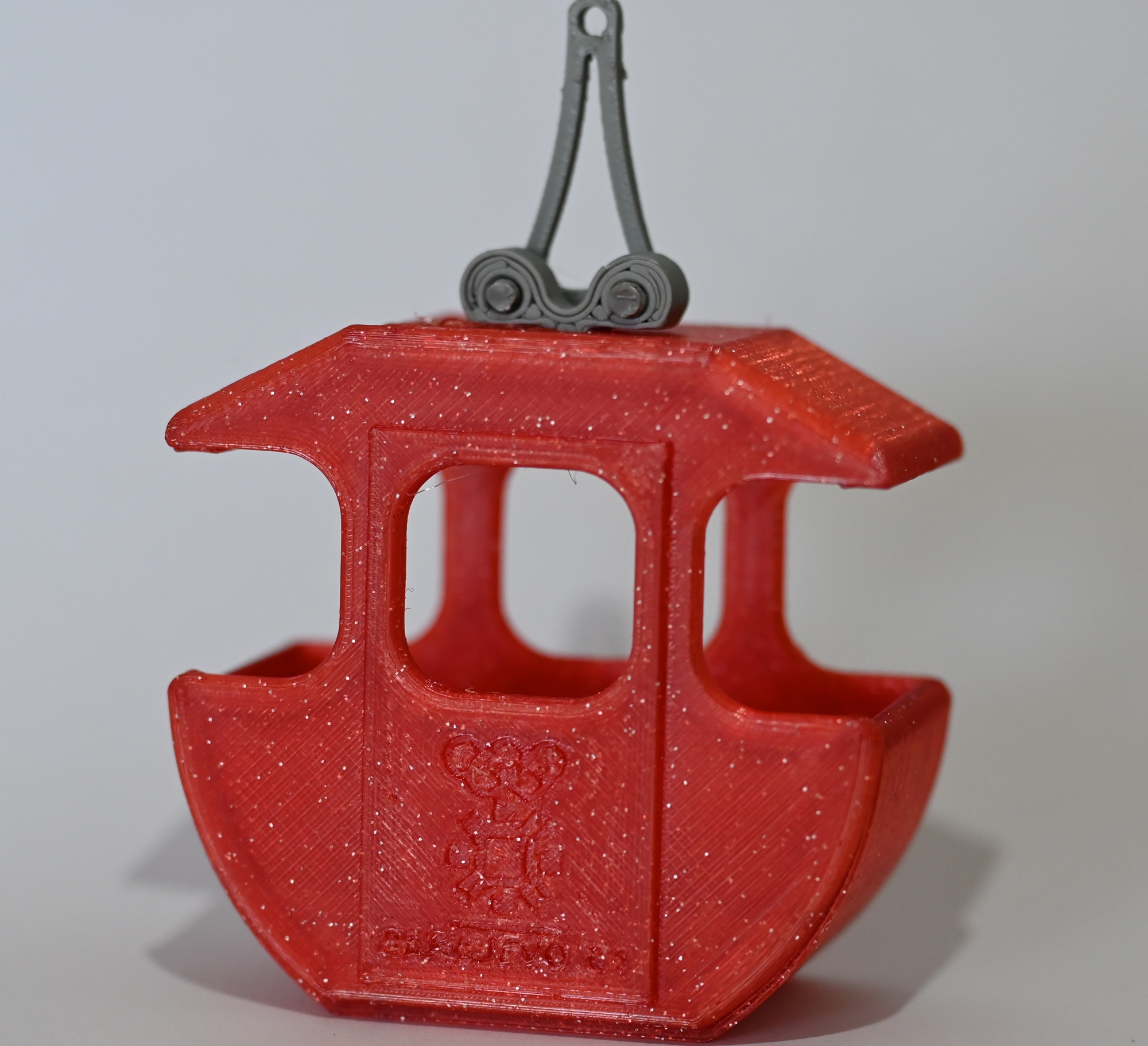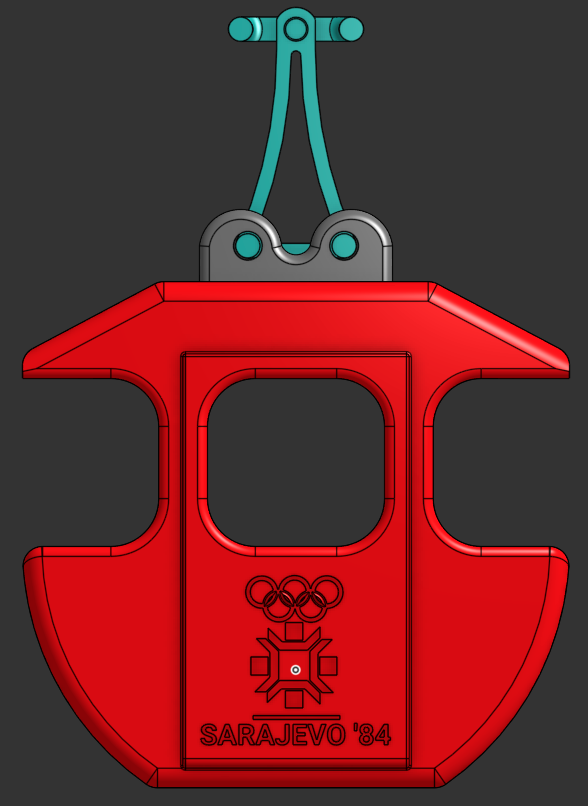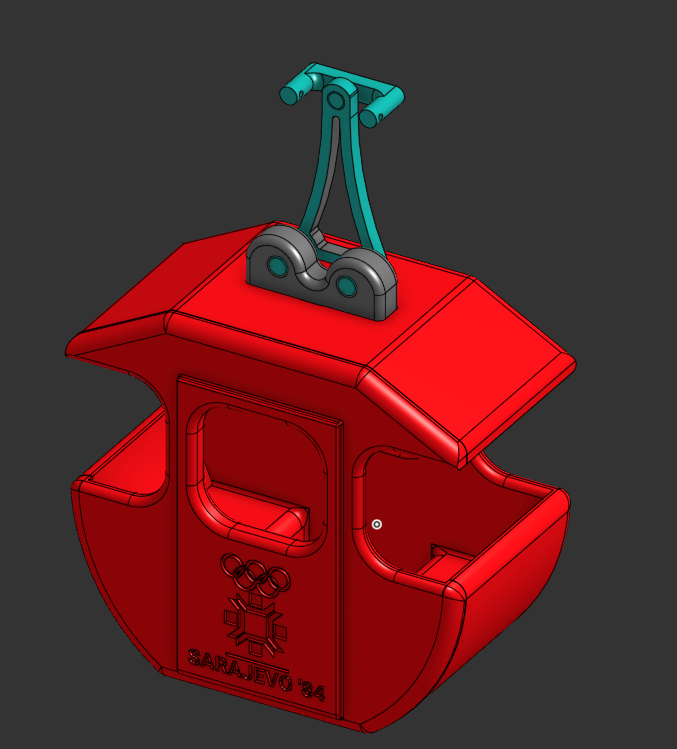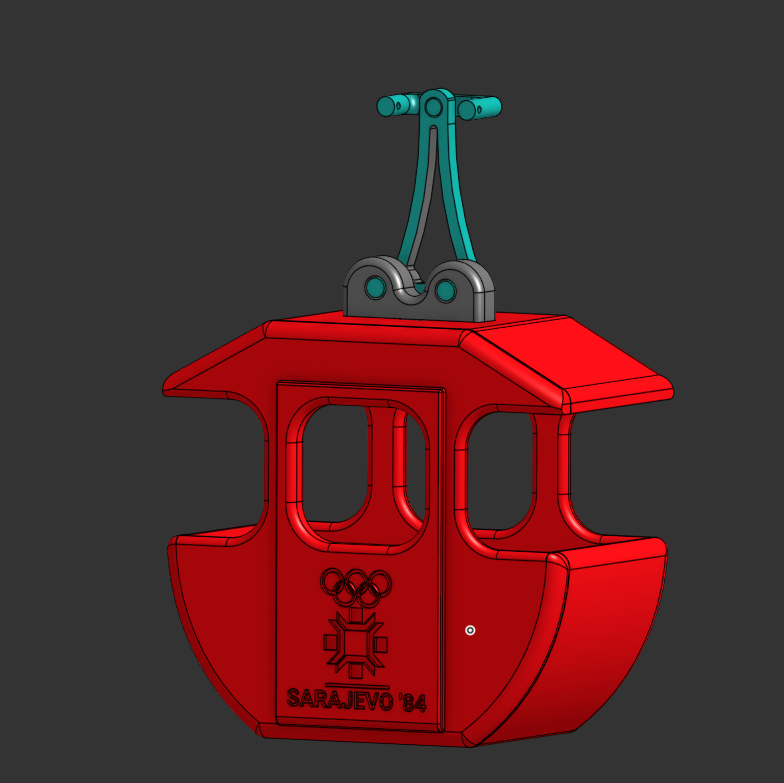- Dimension:8.4cm (W) × 9cm (H) × 4.8cm (D)
- Material:Made from eco-friendly, biodegradable plastice
- Design and production:Expertly designed for 12 hours, 3D printed in 7 hours
- Packing:Eco-friendly and recyclable; return it and receive a discount on your next purchase
- Maintenance instructions:Keep away from direct sunlight; handle with care, especially during transport
- Impact:With every purchase, you help restock local rivers and lakes
- Interactive feature:Scan the QR code and explore the rich history of Sarajevo
- Ecology:Part of the funds from the purchase of this souvenir will be used for restocking lakes and rivers in Bosnia and Herzegovina
ABOUT THE BUILDING
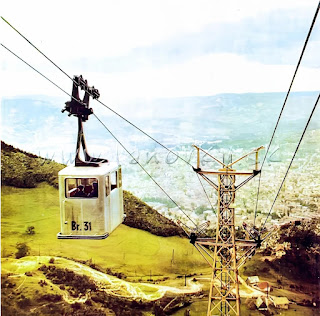
The first cable car on Trebević was officially opened back in 1959 and connected Bistrik with Vidikovac on Trebević with a difference in altitude of 500 meters. Although it was destroyed in the war and closed several times due to technical problems, it was rebuilt and is still one of the symbols of the city of Sarajevo that gathers many tourists throughout the year. During the 1984 Winter Olympics, the cable car was an important link between the city and the Olympic track for bobsleigh and luge on Trebević, and today it is a modern symbol of the event that made Sarajevo the center of the world more than 40 years ago.
HISTORY
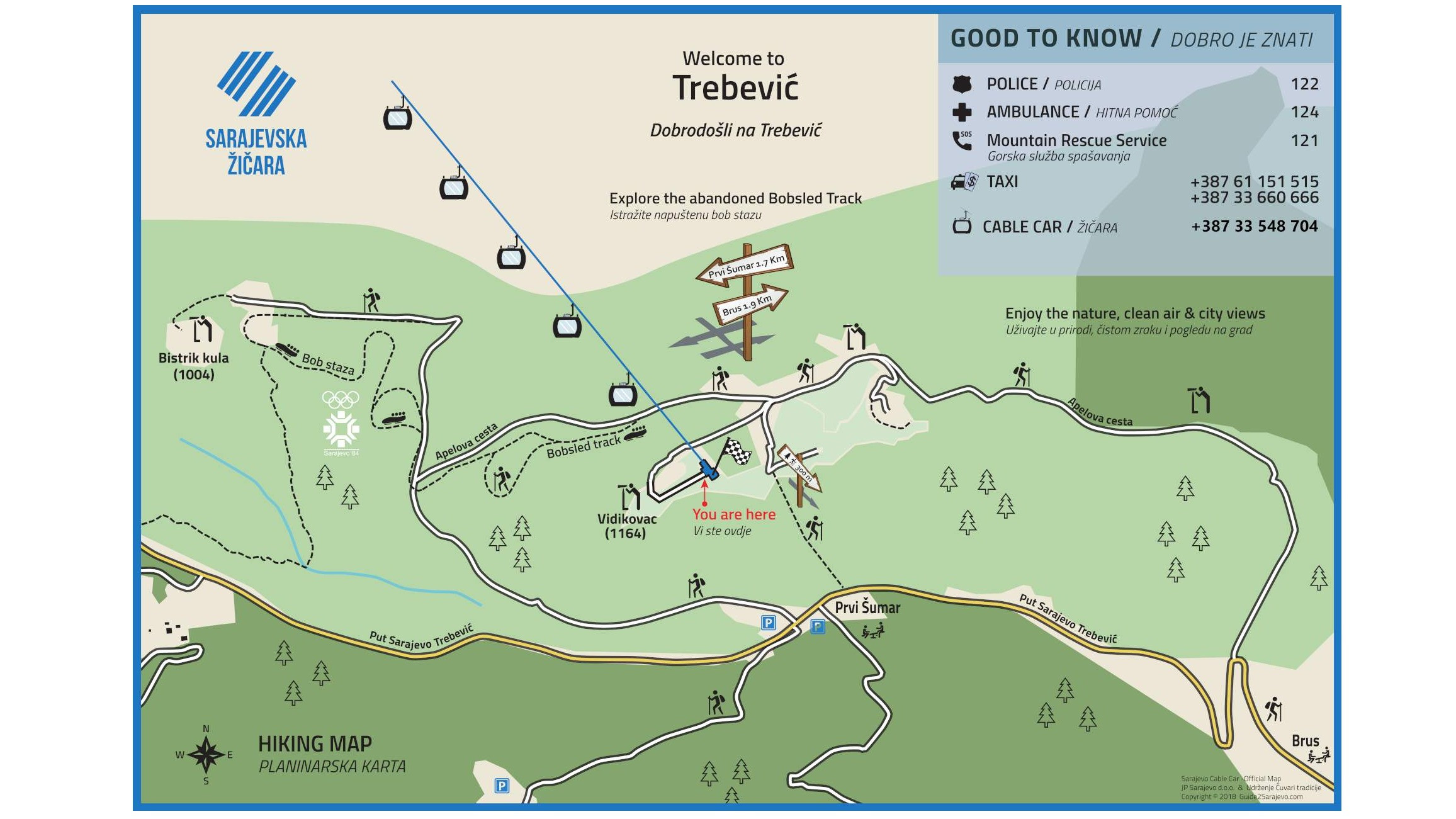
The first cable car on Trebević was built way back in 1959 in order to bypass the steep road to one of the most beautiful nature picnic spots in the Sarajevo area. Preparations for construction began in 1956, while construction began two years later. In May 1959, the Žičara was opened, which connected Bistrik at an altitude of 586 m with Vidikovac on Trebević, which is at an altitude of 1160 m.
The total distance between the starting and ending stations is slightly less than 2100 meters, and the opening of the Cable Car was attended by a large number of people who were eagerly waiting to see the cabins in motion. The cable car moved in both directions with a total of 50 cabins with a capacity of four passengers per cabin. The leading designer of the Žičara construction was the Czechoslovak František Šup, while the largest companies from the former Yugoslavia such as Energoinvest, Impola, Termoelektro and Jelšingrad worked on the project.
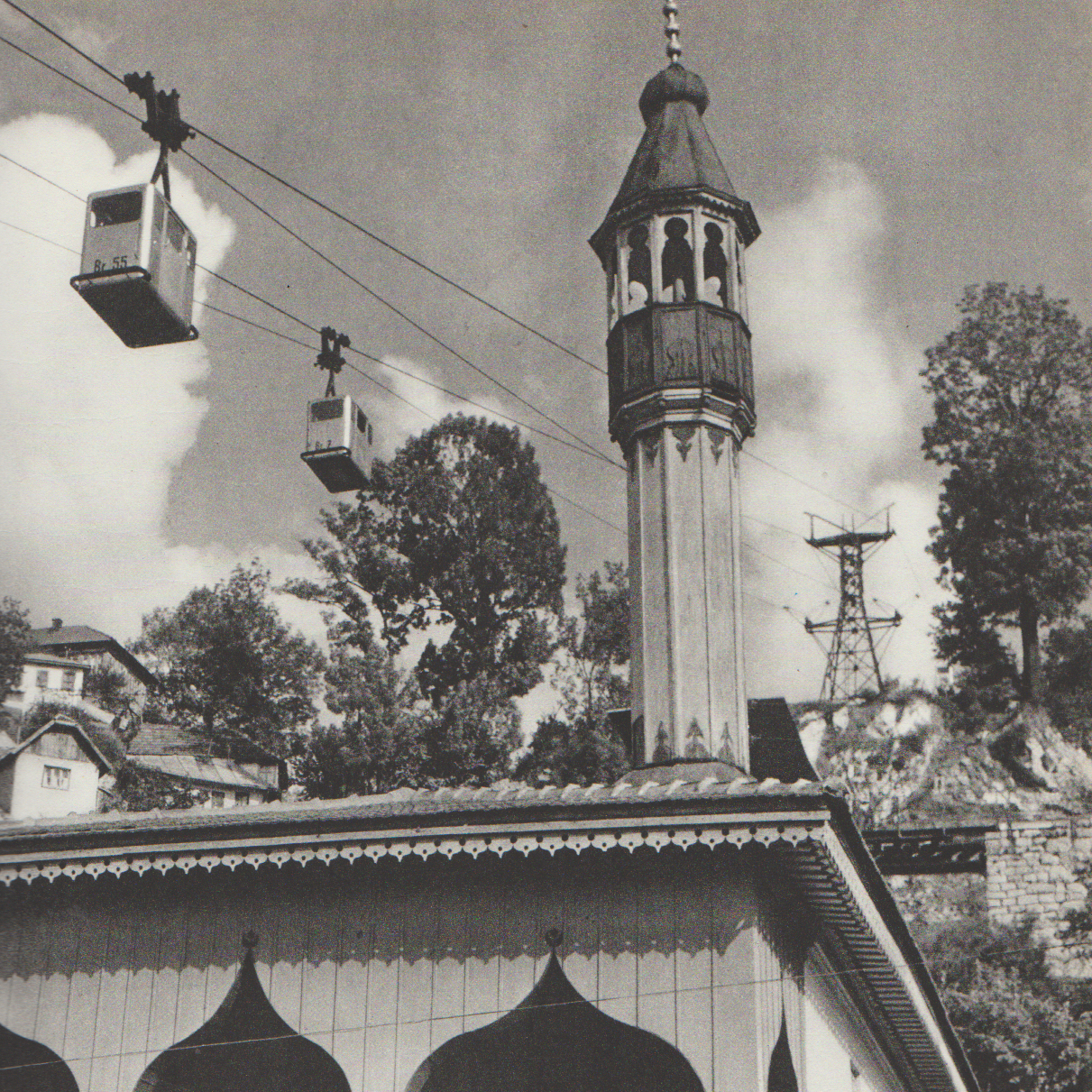 In that period, the Trebević cable car was one of the largest in these areas, and until the beginning of the war, it was closed several times due to technical problems. In the first days of the war in 1992, the Cable Car was destroyed and remained so until 2018, when it reopened.
In that period, the Trebević cable car was one of the largest in these areas, and until the beginning of the war, it was closed several times due to technical problems. In the first days of the war in 1992, the Cable Car was destroyed and remained so until 2018, when it reopened.
The renovation of the Žičara began in 2017, and the main donor was Edmond Offerman, who together with his wife gave Sarajevo a little less than 4 million euros for the reconstruction of the Žičara. On the Day of the City of Sarajevo, on April 6, 2018, the Cable Car was reopened, which awakened many memories and nostalgia for the period when the Winter Olympic Games were held in Sarajevo.
Today's cable car consists of 33 gondolas with a capacity of 10 people per cabin, and it only takes eight minutes to get from the starting point to Vidikovac on Trebević. Five gondolas are in the colors of the Olympic rings, namely blue, red, yellow, green and black; one gondola is in the colors of the flag of Bosnia and Herzegovina, while the others are black.
BUILDING STYLE
Socialist modernism is a direction of architecture that developed in socialist countries after the end of the Second World War, especially in the period from the 1950s to the 1980s. In Yugoslavia, socialist modernism with the spirit of Western modern design is the direction that ruled construction and architecture, so the first Cable Car on Trebevic was built in that spirit.
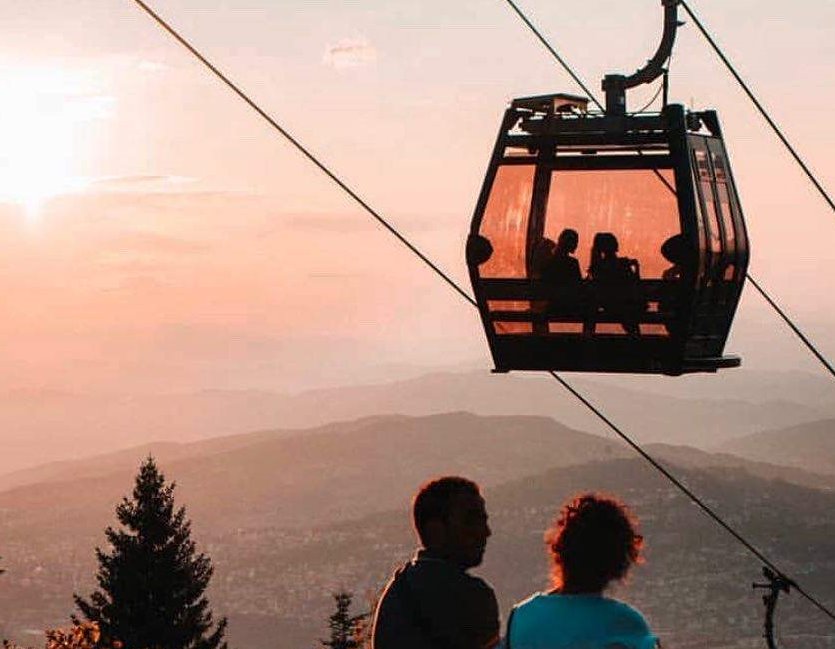 The most important characteristics of this design were simplicity and flexibility in construction, meaning that everything that was built was subordinated to its basic purpose and purpose, in order to save time and money and avoid unnecessary decoration and useless details. Basic geometric forms were primarily used in the design, which can be seen in the pronounced horizontals and verticals of buildings built in the Yugoslav period. Concrete, due to its practicality and availability, was the basic material used for construction, and its strength and durability promised safety and quality of construction.
The most important characteristics of this design were simplicity and flexibility in construction, meaning that everything that was built was subordinated to its basic purpose and purpose, in order to save time and money and avoid unnecessary decoration and useless details. Basic geometric forms were primarily used in the design, which can be seen in the pronounced horizontals and verticals of buildings built in the Yugoslav period. Concrete, due to its practicality and availability, was the basic material used for construction, and its strength and durability promised safety and quality of construction.
MATERIALS OF WHICH THE CABLE CAR IS MADE
Concrete, as one of the basic materials for the construction of the Cable Car's pillars and foundations, is a material that was a very affordable and stable choice for any structure that required stability and safety during this period of construction. In its brutalist and raw style, it represents a symbol of the durability and stability of the community.
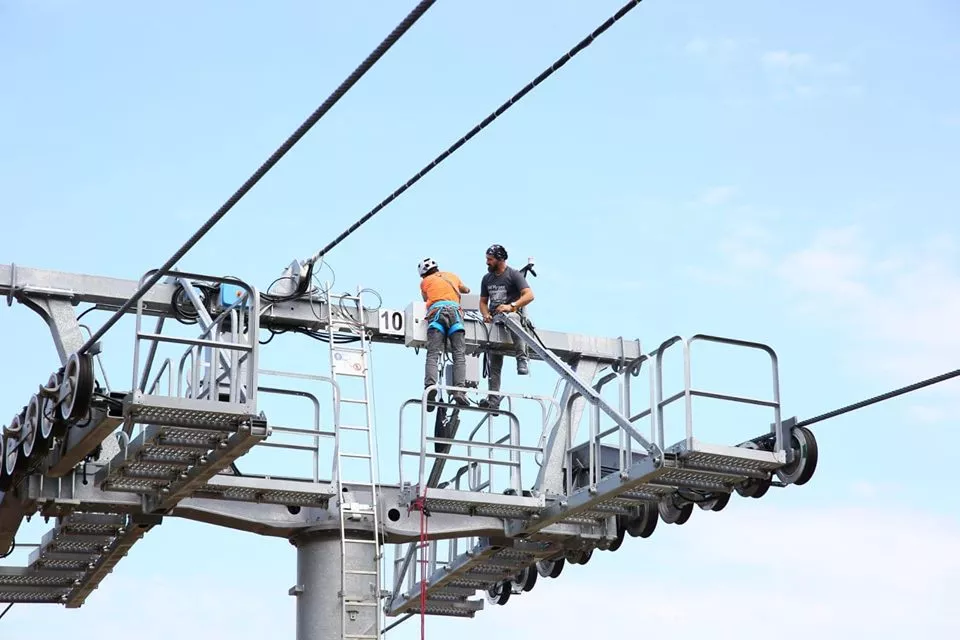 Different types of metals, such as steel and aluminum, were most often used for transmission cables and gondolas, due to their durability, strength and flexibility. It is these metals that symbolize industrial progress and the development of technology, as well as the precision and ability of people to manage such materials in order to create a final product.
Different types of metals, such as steel and aluminum, were most often used for transmission cables and gondolas, due to their durability, strength and flexibility. It is these metals that symbolize industrial progress and the development of technology, as well as the precision and ability of people to manage such materials in order to create a final product.
The most dominant material used to build gondolas is glass, which, with its transparency, allowed for a view of the ascent from the Old Town to the mountain. The symbol of glass is the connection between the interior of the cabin and the outside nature, which allows direct contact with nature, as well as a feeling of freedom and transparency with the environment.
Although these are very common materials for the period of socialist modernism, together they resulted in the creation of one of the greatest symbols of the construction of the former Yugoslavia, and with their permanence will be a proof of togetherness and flexibility for future generations.
SHORT STORY
Although I am not much of a sports fan, I promised my husband and children that we would go watch bobsled, because it is one of their favorite sports and they have been looking forward to it since six years ago, Sarajevo was chosen as the city where this year's games will be held. I'm not particularly excited by that sport, but I really liked the location of the bobsled, as well as the transport we will use to get to Trebević. I remember the time when there was talk of building a cable car and connecting the city with the wonderful nature of Trebević. I was so excited at the thought of escaping from the noise and heaviness of the city to the untouched peace of nature in just a few minutes. My father was one of the workers who worked on the construction of the Cable Car for a year, so every working day when he came home for lunch I had a list of various questions about that project.
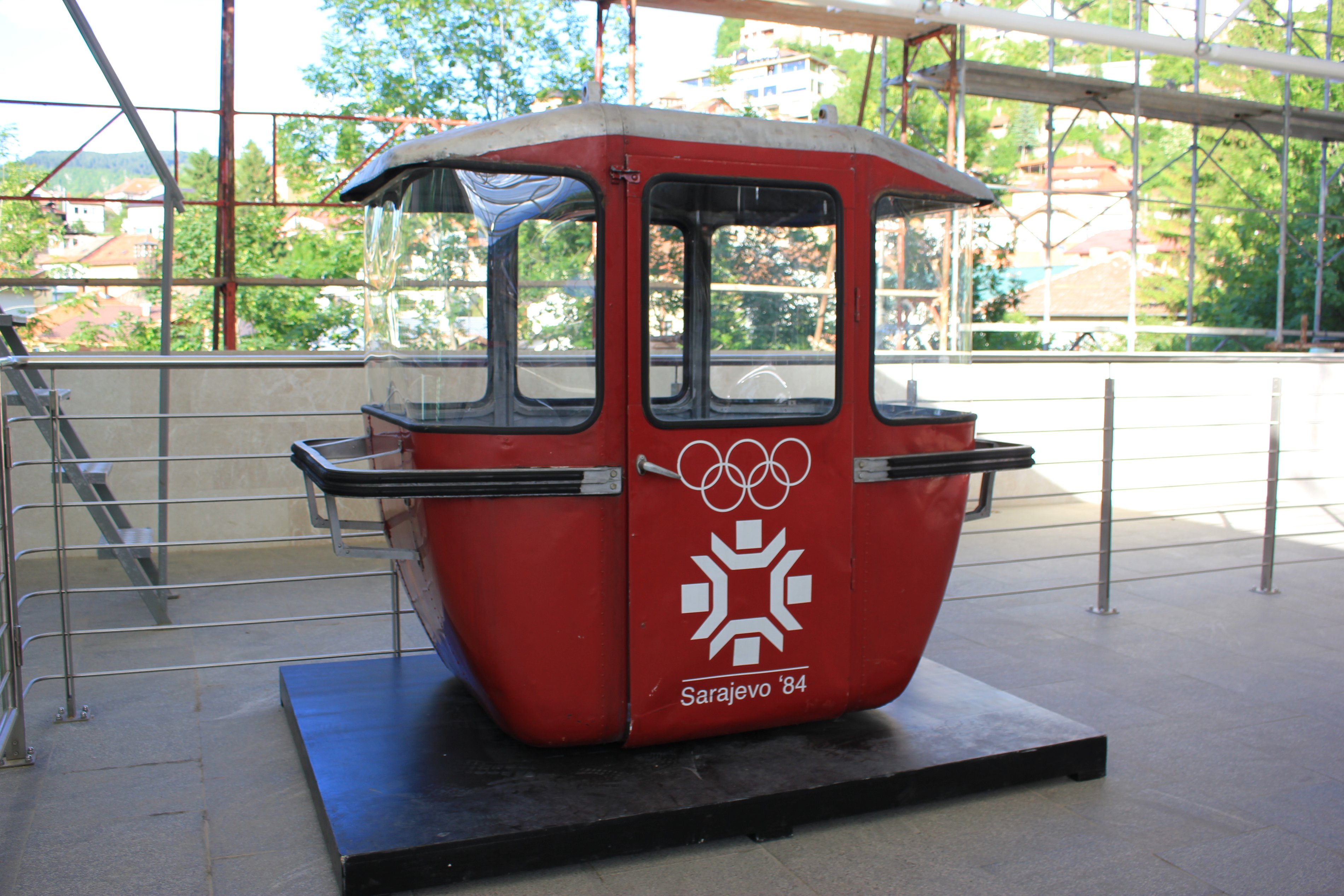 I was a little girl when the doors of the first gondola I ever saw opened, marking the beginning of the Trebević cable car. Whenever I had the chance to go on a trip to Trebević with my friends, we would get ready in a flash and spend hours there exploring nature, not noticing the other people around us. The cable car marked the happiest days of my girlhood and witnessed my first kiss, problems, adventures and mishaps. Since it was built, it has been closed several times due to technical difficulties, and each time I would feel as if a piece of my childhood and memories of better times were being taken away from me.
I was a little girl when the doors of the first gondola I ever saw opened, marking the beginning of the Trebević cable car. Whenever I had the chance to go on a trip to Trebević with my friends, we would get ready in a flash and spend hours there exploring nature, not noticing the other people around us. The cable car marked the happiest days of my girlhood and witnessed my first kiss, problems, adventures and mishaps. Since it was built, it has been closed several times due to technical difficulties, and each time I would feel as if a piece of my childhood and memories of better times were being taken away from me.
When I heard that Sarajevo would host the Olympic Games, I knew that the cable car would be one of the most important means of transportation to Mount Trebević, and I was excitedly waiting for the day when I would once again enter that little red gondola that my husband and I used to ride in when we were young and had fun. Today, the day has come for us to head from Bistrik to the mountain as a family and attend the first day of the two-seater bobsleigh competition, to support our team and raise the Yugoslav flag among the many other flags of the greats of this sport.
For the last few days, the three of them have been discussing who will win the two-seater and four-seater bobsleigh, and it seems to me that they favor the first team of East Germany, because as they say, there is a Hoppe in the team, who is a real star of German bobsleigh.
And while they are so excited about watching bobsleigh live for the first time in their own homeland, my heart is beating faster because in a few minutes it will be our turn to get into that little red gondola and set off on a short but sweet journey to Mount Trebević.
REFERENCES
- Sarajevo The Ultimate Guide, Isović Emir, Objavio autor od vlastitih sredstava, Sarajevo 2021., p. 146, ISBN 978-9958-079-13-9;
- Sarajevska žičara, Historija, Prva izgradnja Žičare, 17.3.2023.,
https://www.zicara.ba/bs/prva-izgradnja-zicare/ - Destination Sarajevo, Trebevićka žičara (Uspinjača),https://sarajevo.travel/ba/sta-raditi/trebevicka-zicara-uspinjaca/1325 ;
- Nezavisne novine, Gondole Trebevićke žičare nakon više od dvije decenije ponovno iznad Sarajeva, 27.1.2018., https://www.nezavisne.com/novosti/gradovi/Gondole-Trebevicke-zicare-nakon-vise-od-dvije-decenije-ponovno-iznad-Sarajeva/462286
- Grad Sarajevo, City Life, Trebevićka žičara, https://www.sarajevo.ba/bs/article/1179/trebevicka-zicara
- Škola kritičkog mišljenja, Socijalistički modernizam imao je humanističku viziju da se stvari grade kako bi ljudi živjeli bolje i dostojanstvenije, 24.9.2013.,https://arhiva.tacno.net/novosti/socijalisticki-modernizam-imao-je-humanisticku-viziju-da-se-stvari-grade-kako-bi-ljudi-zivjeli-bolje-i-dostojanstvenije/
- SARAJEVO, H.Tahmaščić, Zavod za izdavanje udžbenika Sarajevo, 1970.
